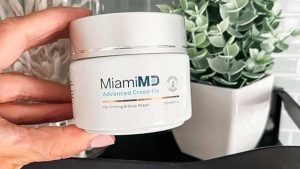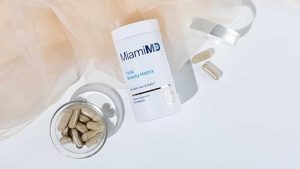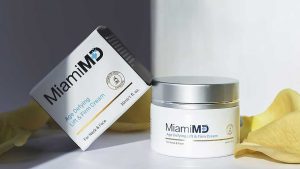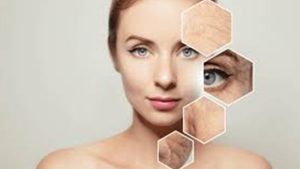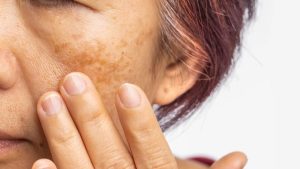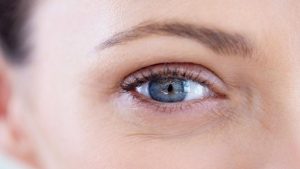What Causes Under-Eye Wrinkles? Prevention & Treatment Tips
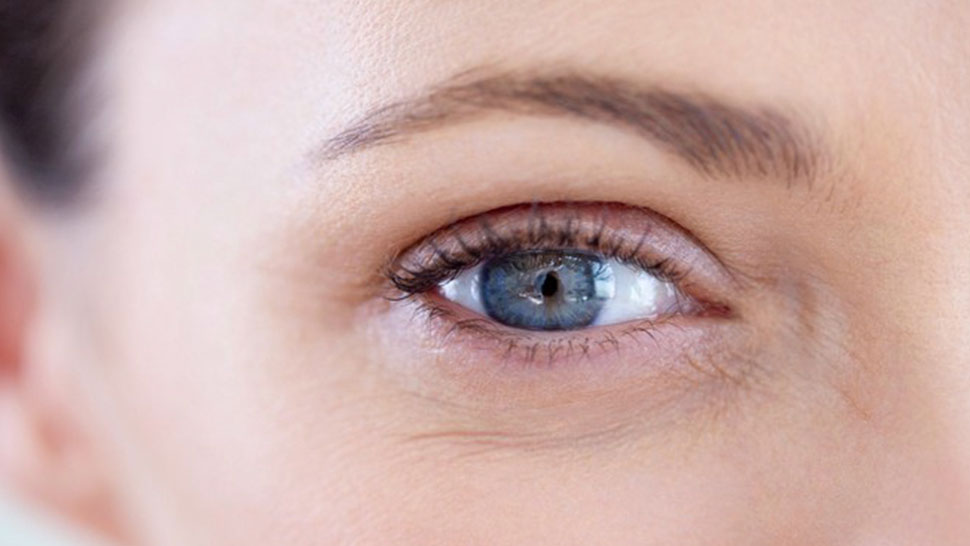
Under-eye wrinkles are a common concern that can make us look older, tired, or worn down. The delicate skin around the eyes is thinner and more fragile than the rest of the face, making it one of the first areas to show signs of aging.
Factors like sun exposure, repetitive facial movements, and lifestyle habits can all contribute to developing fine lines and wrinkles under the eyes.
While under-eye wrinkles are a natural part of aging, the good news is that they don’t have to be permanent or inevitable. With the right knowledge, preventative measures, and targeted treatments, you can minimize their appearance and even slow their progression.
In this blog, we’ll explore the key causes of under-eye wrinkles, practical tips for prevention, and expert-recommended treatments to help you maintain a youthful, rested, and radiant appearance.
Why Do Under-Eye Wrinkles Happen?
Under-eye wrinkles are one of the earliest and most noticeable signs of aging, but they don’t develop overnight. These fine lines and creases result from a combination of factors. The skin in this area is thinner and more delicate than the rest of the face, which makes it especially vulnerable to wear and tear over time.
Several factors, such as genetics and lifestyle habits, can affect how quickly wrinkles form. If you have a family history of early signs of aging, you may notice fine lines appearing sooner than others.
External factors, like your environment or skincare routine, can either accelerate or slow the process. Understanding the key causes of under-eye wrinkles is essential for addressing them effectively.
By identifying the contributing factors, you can take targeted steps to protect and restore the youthful appearance of your under-eye area.
Whether it’s lifestyle habits, sun exposure, or simply genetics, knowing why these wrinkles occur is the first step toward managing their appearance. With proper care, you can slow down premature signs of aging and keep your skin looking healthy and vibrant.
Aging
As we age, our skin produces less collagen and elastin. These proteins are responsible for keeping skin firm and smooth.
According to Dr. Whitney Bowe, a board-certified dermatologist, “Collagen production begins to decline in our late 20s, and by the time we hit our 40s, our skin has lost much of its resilience ” (1).
As we age, our skin’s ability to retain moisture diminishes, leading to dryness and a dull complexion. Being particularly sensitive, the under-eye area often shows these effects more prominently. Combined with slower cell turnover, this results in a less radiant look over time.
While aging is inevitable, understanding its effects on the skin can help you take proactive steps to manage these changes effectively.
Facial Expressions
Frequent facial movements like squinting, smiling, or frowning can lead to dynamic wrinkles over time. Every time you move your face, the skin around your eyes creases.
Over the years, these creases can become permanent as your skin loses elasticity. The thin skin in the under-eye area is especially vulnerable to these repetitive motions, making it one of the first places where fine lines and wrinkles appear.
Daily habits like squinting at a computer screen or reading in dim light can worsen these creases. Also, habitual expressions such as raising your eyebrows or furrowing your brow can contribute to fine lines both around and above the eyes.
While facial expressions are a natural and beautiful part of life, being mindful of repetitive movements can help reduce unnecessary strain on the skin.
Sun Damage
Exposure to ultraviolet (UV) light accelerates skin aging, a process known as photoaging. The sun’s rays break down collagen and elastin fibers in the skin, leaving it weaker and more prone to wrinkling.
Dr. Doris Day, a dermatologist and author of Beyond Beautiful, explains, “The skin around the eyes is thinner and more fragile than other areas, making it highly susceptible to sun damage” (2).
Beyond wrinkles, sun damage can also cause irritation and redness, which may lead to long-term sensitivity in the under-eye region. Taking a proactive approach to sun protection can help reduce wrinkles and ensure healthier, more resilient skin over time.
Dehydration
When your skin is dehydrated, it loses plumpness and elasticity, making wrinkles more pronounced. The under-eye area, in particular, is prone to dryness because it has fewer oil glands compared to other parts of the face, making it harder to retain moisture.
Dehydration can also weaken the skin’s natural barrier, leaving it more vulnerable to environmental stressors like pollution and dry air. This can create a cycle of dryness that further accentuates fine lines and wrinkles, especially under the eyes.
Adding hydrating products into your skincare routine and drinking enough water can help restore moisture and improve the overall texture of your skin.
How To Manage the Look of Under-Eye Wrinkles
While under-eye wrinkles are a natural part of aging, they don’t have to define your appearance. With the right care and lifestyle adjustments, you can significantly reduce their visibility and even prevent new ones from forming. The delicate skin around the eyes requires special attention, as it’s more prone to dryness, thinning, and damage from environmental factors.
Thankfully, modern skincare solutions and preventative measures make it easier than ever to manage the look of under-eye wrinkles. Small changes can make a big difference.
From protecting your skin against harmful UV rays to incorporating targeted treatments into your routine. These steps not only help smooth out fine lines but also promote healthier, more radiant skin overall.
Protect Your Eye Area
Protecting your skin from UV damage is one of the most effective ways to prevent under-eye wrinkles. A broad-spectrum sunscreen, like MiamiMD’s Sun Shield with SPF 40, is a must. SPF 40 provides more than double the Skin Cancer Foundation’s recommended level of protection. This formula is also enriched with aloe vera and vitamin C to soothe and protect the delicate under-eye area.
Dr. Joshua Zeichner, director of cosmetic and clinical research in dermatology, advises, “Daily sunscreen use is your best defense against premature aging. Apply sunscreen every morning, even on cloudy days, to protect your skin from harmful UV rays” (3).
In addition to sunscreen, wearing wide-brimmed hats and UV-blocking sunglasses can add an extra layer of protection for the under-eye area. These simple habits can go a long way in preventing premature wrinkles caused by sun exposure.
Incorporate Eye Treatments
Using targeted eye treatments can help reduce the appearance of wrinkles and restore a youthful glow to your under-eye area.
Look for products with proven ingredients like peptides, antioxidants, and hyaluronic acid:
- MiamiMD Intensive Eye Repair Serum: This serum is formulated with peptides like Matrixyl 3000 and Haloxyl, which help lift and firm the skin while reducing crow’s feet and under-eye bags.
- MiamiMD Instant Wrinkle Eraser: Known as the “aging invisibility cloak,” this product uses Matrixyl Synthe-6 and Acetyl Hexapeptide 30 to smooth fine lines and wrinkles within minutes. It’s perfect for a quick confidence boost before an important event.
Dr. Ava Shamban, a board-certified dermatologist and co-founder of SKIN FIVE, emphasizes the importance of consistency. “For best results, apply eye serums and creams daily as part of your skincare routine. This helps replenish lost moisture and collagen over time” (4).
Stay Hydrated
Hydration is key to keeping your skin plump and smooth. When your body is properly hydrated, your skin is better able to retain moisture, which minimizes the appearance of fine lines. Aim to drink at least eight glasses of water a day and consider eating water-rich foods like cucumbers, watermelon, and oranges.
Dr. Howard Murad, a renowned dermatologist and founder of Murad Skincare, states, “Hydration isn’t just about drinking water. It’s about maintaining water levels in your skin. Use hydrating products alongside your water intake to keep your skin healthy and supple.”
Get Enough Sleep
Sleep is essential for skin repair and regeneration. When you don’t get enough rest, your body produces excess cortisol, a stress hormone that breaks down collagen. Lack of sleep can also lead to puffiness and dark circles under the eyes, making wrinkles more noticeable.
Dr. Michael Breus, a clinical psychologist and sleep specialist, recommends aiming for seven to nine hours of quality sleep each night. “Sleep is when your body repairs itself, including your skin. Establish a bedtime routine to ensure you’re getting the rest you need for optimal skin health.”
The Bottom Line
Under-eye wrinkles are a natural part of life, but with the right preventative measures and treatments, you can significantly reduce their appearance.
Protect your skin with a broad-spectrum sunscreen like MiamiMD’s Sun Shield, incorporate targeted eye treatments such as the Intensive Eye Repair Serum and Instant Wrinkle Eraser, stay hydrated, and get plenty of sleep.
Consistency is key when it comes to managing under-eye wrinkles. Adopting a daily skincare routine that prioritizes sun protection, hydration, and the use of anti-aging products can help you achieve noticeable, long-lasting results. Making small lifestyle changes, such as wearing sunglasses to prevent squinting and eating a diet rich in antioxidants, can further support the health and resilience of your skin.
By understanding the causes of under-eye wrinkles and taking proactive steps to care for your skin, you can maintain a youthful, radiant appearance for years to come.
Resources:
- Vogue. 5 Signs Your Skin Is Losing Collagen.
https://www.vogue.com/article/losing-collagen-signs - Healthline. Causes of thin under-eye skin.
https://www.healthline.com/health/beauty-skincare/thin-skin-under-eyes#causes - The Conversation. Sunscreen: here’s why it’s an anti-ageing skincare essential.
https://theconversation.com/sunscreen-heres-why-its-an-anti-ageing-skincare-essential-187322 - Kiehl’s. Why You Need an Eye Serum to Your Everyday Routine.
https://www.kiehls.com/skincare-advice/eye-serum-101.html
